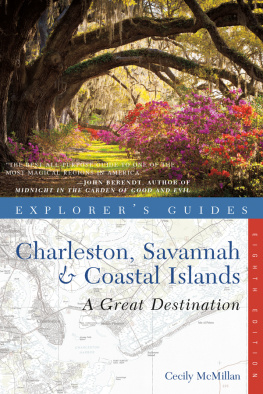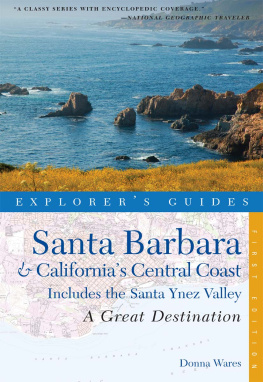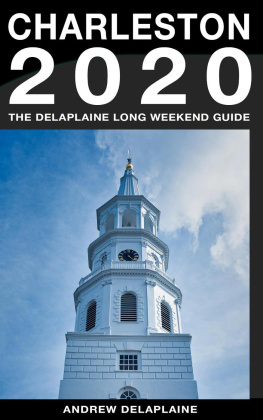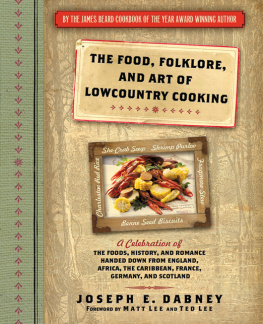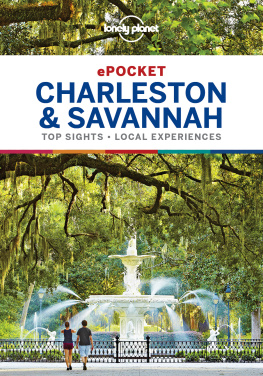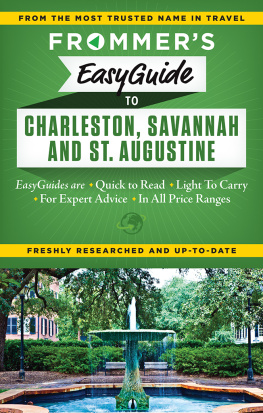
To George McMillan, who introduced me to the beauty and social complexity of the Lowcountry, and to our son, Tom, with whom I continue to love it; and to Priscilla Johnson McMillan, whose wisdom and support has allowed me to understand it.
Contents
MAPS

THERE ARE SOME PLACES about which we have such strong impressions that when we finally go there they seem familiar. The Lowcountry seems to have lodged itself securely in so many imaginations that I often find, when I am asked about it, that what I have to say matters less than the opportunity for someone to focus the picture they already have.
Where these clustered impressions come froma history lesson on the Civil War, a friend, novel, or movieseems less important than the fact that they feel fully conceived. This isnt surprising: The Lowcountry has earned our permanent attention. It is a compelling world. Like other places that have witnessed tremendous historic upheavals and whose residents have had to adjust to changed circumstances, it evokes a natural sympathy in us for its stories.
I like listening in and locating the presence of the past: on the shores of St. Helena Sound, where I catch crabs on a string or dig for clams much as Native Americans might have done; at Drayton Hall, where beds of lilies bloom, as they did in Jeffersons Monticello garden; at Penn Center, where descendants of slaves honor their heritage and the strength of their forebears in song; on the squares of Savannah, laid out more than 275 years ago and still possessing a power of geometry that untangles nature and orders urban life. The regions physical beauty is evocative. The landscape is soft and flat, edges softened by marsh grass and sand. The air, weighted by moisture, wraps it like a package. The light changes several times a day, and very dramatically from season to season.
This book is intended to both introduce you to some of the long-standing pleasures and pastimes found in the Lowcountry and point you to where you might discover ones of your own as the regions cities and towns flourish in the 21st century. Your efforts may be studiousadmiring architecture, exploring sites of historic and cultural significance. Or you may be content to satisfy your senses: to walk a beach, smell the marsh, watch a pelican dive, taste fresh shrimp. Dont neglect to listen for old stories, either.
You could end up joining those who visit and return for good. The glossy residential resorts like Kiawah and Palmetto Bluff shine like jewels; Beaufort cant stay off Best Small Town lists as newcomers enliven its culture; and Savannah and Charleston keep reinventing themselves as art and restaurant destinations. Today, restaurants, bookstores, jazz and blues clubs, clothing shops, art galleries, and B&Bs are embedding themselves in the old Lowcountry places. They are enlarging the remnant world, just as spats fasten on oyster banks and make them grow.
Cecily McMillan
St. Helena Island, South Carolina
THIS BOOK is divided into five chapters, four of which cover specific regions of the Lowcountry. Brief historical summaries introduce them; recommendations and reviews follow. They cover a range of options according to style and price, and will help you make decisions, whether you are staying in one area or intend to travel the region.
Some entries, most notably those in the Lodging and Dining sections of chapters, include detailed information (telephone, address, hours, etc.) organized for easy reference at the beginning of each listing. All such information has been checked for accuracy as close to the time of publication as possible, but things change, so its best to check in advance. Wherever possible I have included websites where you may learn, among other information, if the establishment has a social media presence you can follow. The best of the sites provide creative and useful links to local blogs. For year-round tourist information and seasonal activities, see Chapter Five, Information.
PRICES
Prices change, too, and for that reason Ive avoided listing specific prices in favor of noting their range. Lodging price codes are based on a per-room rate, double occupancy in the high-season months; they do not include room taxes or special service charges that might apply during your stay. Ask about AAA, AARP, and other discounts. Low-season rates, which generally apply in December and January, are usually about 20 percent less. In the high season many places, small and large, require a minimum two-night stay and may also have specific rules regarding adequate notice and refunds in the event of cancellation. It is assumed that payment by credit or debit card is accepted, and that is true 99 percent of the time, but Ive noted the exceptions.
You might also confirm information provided about policies concerning such things as handicapped access, smoking, and how adaptable the site is for children and pets.
Restaurant prices indicate the cost of a meal including appetizer, entre, and dessert, but not bar beverages, tax, or tip. Here again, the season of your visit may bring on special conditions: When there are crowds, most restaurants extend their hours of operation, serving meals both earlier and later. In the winter, they may shut down for a day or two or longer in the rural areas.
Price Codes
Lodging | Dining |
Inexpensive | Up to $80 | Up to $15 |
Moderate | $80 to $140 | $15 to $30 |
Expensive | $140 to $200 | $30 to $50 |
Very expensive | Over $200 | Over $50 |

Bonaventure Cemetery, full of sculpture and history, has drawn visitors for more than 150 years. Savannah Area Convention & Visitors Bureau
LONG BEFORE THE ENGLISH LANDED in the Lowcountry, before Jamestown and Plymouth Rock, Captain Jean Ribaut and 150 Huguenot colonists landed near Beaufort, at what is now the Marine Corps Recruit Depot on Parris Island. In a report he stated there was no fayrer or fytter place than the area of Port Royal Sound, one of the goodlyest, best and frutfullest countres that ever was sene; where egrets were so plentiful bushes be all white covered with them; where there were so many sortes of fishes that ye may take them without net or angle. He wrote that in 1562.
To a modern traveler who chances upon a rookery in Hunting Island State Park or Edistos Botany Bay Preserve, or to the youngster throwing a cast net and needing the strength of two to draw it in, little has changed. The natural resources of the Lowcountry are breathtakingly impressive. There will be schools of dolphin by your boat off Hilton Head, hundreds of loggerhead turtles nests from the ACE Basin shoreline to Port Royal Sound and the Atlantic, and thousands of terns, whichwhen they rise all at once off a sandbar in St. Helena Soundappear as a cloud of smoke on the horizon. There will be late-afternoon light so intense and golden it makes the dun bark of the grayest sycamore shimmer.
And, when Ribaut called the Lowcountry a place where nothing lacketh, Charleston, Beaufort, and Savannah had not even been invented.
It only took about 50 years from their founding at the turn of the 17th and 18th centuries for each of these cities to develop the self-consciousness we now recognize as the spirit of place; a short time, perhaps because the raw ingredients were there all along, waiting to be shaped, tapped, and exploited. History has shown us that such loyalty, such an abiding sense of legacy and protection, can get you into trouble, and a war was fought here in part over that kind of crazy pride. And I have felt of people I know that if they ever left the city limits of Charleston or Savannah, or crossed the bridge away from St. Helena Island, they would vaporize.
Next page
